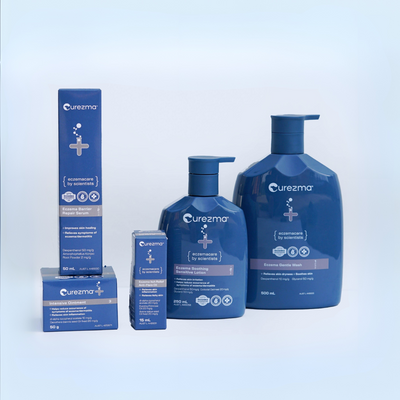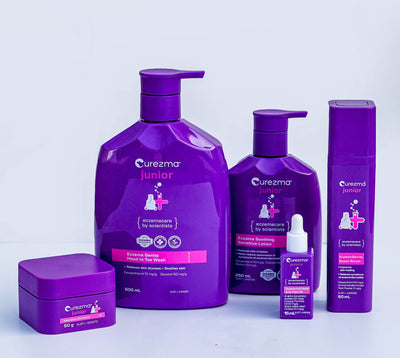The Role of the Microbiome in Eczema Treatment
Eczema, or atopic dermatitis, impacts millions globally, presenting complex challenges that involve genetic, environmental, and immunological factors. Among these, the role of the skin microbiome has become a focal point of scientific research, suggesting that microbial diversity on the skin plays a crucial role in the management of eczema flare-ups.
Understanding the Skin Microbiome
The skin microbiome consists of microorganisms, including bacteria, fungi, and viruses, that naturally reside on the skin. A balanced microbiome protects against pathogens and supports the immune system. Disruptions, however, can exacerbate skin conditions like eczema, where an imbalance, especially an overgrowth of Staphylococcus aureus, is often noted in affected individuals.
Studies have shown that individuals with eczema often have a less diverse skin microbiome compared to those without the condition. Particularly, the overgrowth of the bacterium Staphylococcus aureus is commonly observed on eczema-affected skin and is linked to worsening symptoms and increased inflammation (Source: Journal of Allergy and Clinical Immunology).
Microbiome and Eczema Severity
Research indicates that the severity of eczema flare-ups is often correlated with the degree of imbalance in the skin microbiome. A study published in the Nature Reviews Microbiology suggests that a reduction in microbial diversity could promote the colonisation of pathogenic bacteria, like S. aureus, thereby triggering immune responses that exacerbate eczema symptoms.
Treatments Targeting the Microbiome
Emerging treatments focus on restoring microbial balance, potentially offering new therapeutic avenues:
-
Topical Probiotics: Applying probiotics directly to the skin can help restore microbial diversity. Probiotics may competitively inhibit pathogenic bacteria, reduce skin pH, and produce substances that bolster skin's defences (Source: Clinical, Cosmetic and Investigational Dermatology).
-
Prebiotics and Postbiotics: Such as inulin, found in Curezma’s cleanser, nourish beneficial bacteria and support skin barrier function, helping to maintain a healthy microbiome. They may enhance the skin barrier function and modulate the immune response, helping to maintain a healthy microbiome (Source: American Journal of Clinical Dermatology).
-
Antimicrobial Therapies: Treatments that specifically target and reduce S. aureus colonisation can also help manage eczema. This includes specific antibiotics and antiseptic treatments that are less likely to disrupt beneficial bacteria.
The Future of Microbiome-Based Treatments
Curezma’s products incorporate scientifically backed, steroid-free formulas that target underlying eczema factors, including microbiome balance. Our cleanser, enriched with prebiotic inulin, is designed to support and restore the skin’s microbial diversity, offering a holistic approach to eczema treatment.
The link between the skin microbiome and eczema offers promising avenues for innovative treatments. By focusing on microbial balance, treatments like those offered by Curezma can significantly improve life quality for eczema sufferers, providing relief and supporting overall skin health.
Explore how Curezma can help manage your eczema by visiting our website and learning more about our microbiome-friendly products. Join us in embracing a new era of eczema treatment focused on holistic recovery and microbial health.

Sources cited:
- Journal of Allergy and Clinical Immunology - The Impact of Staphylococcus aureus on Eczema: https://www.jacionline.org/article/S0091-6749(17)31484-1/fulltext
- Nature Reviews Microbiology - The Influence of Microbial Diversity on Eczema Symptoms: https://www.nature.com/articles/nrmicro.2017.157
- Clinical, Cosmetic and Investigational Dermatology - Benefits of Topical Probiotics for Eczema: https://www.ncbi.nlm.nih.gov/pmc/articles/PMC6025323/
- American Journal of Clinical Dermatology - Role of Prebiotics and Postbiotics in Skin Health: https://link.springer.com/article/10.1007/s40257-019-00475-7








